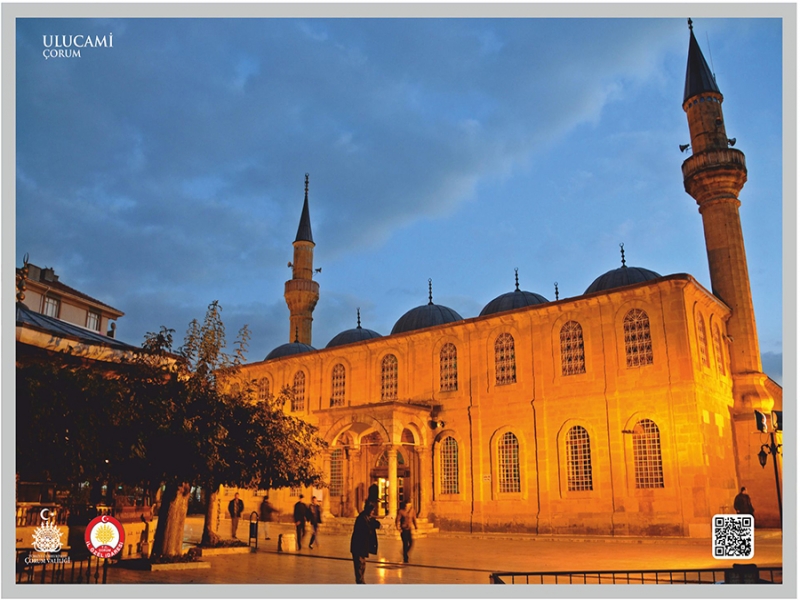
At the centre of the city, the mosque is known to be built by Hayrettin who was a slave of Alaattin Keykubat at the time of Seljukians Sultan 3rd Alaattin Keykubat.The mosque has been in its last situation at the end of big restorations.In Ottomans period 2nd Beyazıt ‘s time because of the big earthquake , ıt was damaged and rebuilt by Mimar Sinan.The repair was writen in his book called ‘’ Tezkiretü’l Ebniye’’ and also it was writen that the Alaattin mosque was built, rebuilt by him.At the time of 3th Murat the mosque was begun to be called ‘’ Sultan Muradi Salis mosque’’
The mosque was rebuilt and madrasah and workplaces were built around it at the time of 4th Murat.
At this time the mosque was called Sultan Muradi Rabi and writen down to the pious foundations registry and records with its last name.In H.1204(M.1790) the mosque ,which was badly damaged because of an earthquake, was begun to be rebuilt in 9 domes form by capanoğlu Süleyman from Yozgat in H.1225(M1802). But after Süleyman was died his son Abdülfettah rebuilt it in wooden form with only one dome in H.1225(M.1810) , and it is in this form at the moment.The last meeting place of the mosque was built after 2nd constitutionalism had been declared.
The Mosque ‘s minbar is important with regard to art history.The minbar was built by using ebony tree, painted in following years.According to the tablets It was built with the order of Davut’s son Ahmed by two artists called Abdullah’s son Davut and Ebubekir’s son Muhammed come from Ankara.The minbar, Which was rebuilt some rebuilts, was saved like its orginal form.The height of the minbar is 3,85m , length is 3,40 m and the height of the door is 2,60 m ,leight is 1m and it has got 11 step stairs.
The minbar has been built with the künde kari technique.Surface around the door and
the mihrab has a skin-deep but also attentive fretwork. On hard edges , curved line cutting style has been used , on other edges , with this style, round and flat surface carving styles have been used.On the West side of the minbar , plastic effect has been intensified by deep curving style.On this surface the light and shadow contrast are rich and ribbed curving is seen.This shows the workships’of two masters as different techniques.The minbar door is suitable for Anatolian tradition.There have been motives in the shape of sharp pear belly on the door wings and inside of motives have been fulled with stylate plant motives .On the door trims, meander and leaf brance motives are attracted attention.The door frame ,side and stair safety rails shelves have been decorated with Rumi motives.At the middle of 12 sides shapes that continue by interlacing on two sides safety rails , 6 edges star motif has been used and motif’s surface has been decorated with plant motives. As well as the sides on which interlacing, stared and polygon geometric shapes have been used, on the West board , 12 armed star motive is formed a centre.